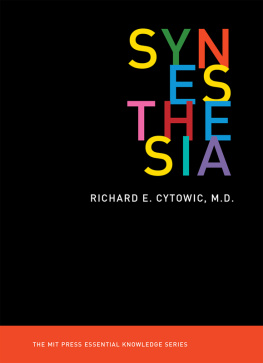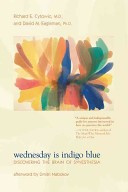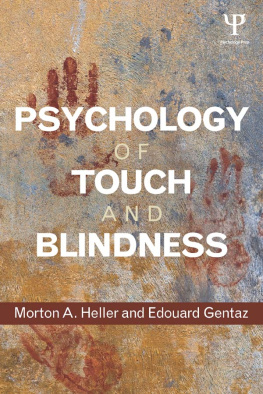The MIT Press Essential Knowledge Series
Auctions, Timothy P. Hubbard and Harry J. Paarsch
Cloud Computing, Nayan Ruparelia
Computing: A Concise History, Paul E. Ceruzzi
The Conscious Mind, Zoltan L. Torey
Crowdsourcing, Daren C. Brabham
Free Will, Mark Balaguer
The Future, Nick Montfort
Information and Society, Michael Buckland
Information and the Modern Corporation, James W. Cortada
Intellectual Property Strategy, John Palfrey
The Internet of Things, Samuel Greengard
Machine Learning: The New AI, Ethem Alpaydin
Machine Translation, Thierry Poibeau
Memes in Digital Culture, Limor Shifman
Metadata, Jeffrey Pomerantz
The MindBody Problem, Jonathan Westphal
MOOCs, Jonathan Haber
Neuroplasticity, Moheb Costandi
Open Access, Peter Suber
Paradox, Margaret Cuonzo
Post-Truth, Lee McIntyre
Robots, John Jordan
Self-Tracking, Gina Neff and Dawn Nafus
Sustainability, Kent E. Portney
Synesthesia, Richard E. Cytowic
The Technological Singularity, Murray Shanahan
Understanding Beliefs, Nils J. Nilsson
Waves, Frederic Raichlen
Synesthesia
Richard E. Cytowic, M.D., M.F.A.
The MIT Press
Cambridge, Massachusetts
London, England
2018 Massachusetts Institute of Technology
All rights reserved. No part of this book may be reproduced in any form by any electronic or mechanical means (including photocopying, recording, or information storage and retrieval) without permission in writing from the publisher.
This book was set in Chaparral Pro by Toppan Best-set Premedia Limited. Printed and bound in the United States of America.
Library of Congress Cataloging-in-Publication Data
Names: Cytowic, Richard E.
Title: Synesthesia / Richard E. Cytowic, M.D.
Description: Cambridge, MA : MIT Press, [2018] | Series: The MIT Press essential knowledge series | Includes bibliographical references and index.
Identifiers: LCCN 2017038744 | ISBN 9780262535090 (pbk. : alk. paper)
eISBN 9780262346276
Subjects: LCSH: Synesthesia.
Classification: LCC RC394.S93 C963 2018 | DDC 152.1/89--dc23 LC record available at https://lccn.loc.gov/2017038744
ePub Version 1.0
Also by Richard E. Cytowic
- Wednesday Is Indigo Blue (with David Eagleman)Winner of the Montaigne Medal
- The Man Who Tasted Shapes
- Synesthesia: A Union of the Senses (2nd edition)
- Nerve Block for Common Pain
- The Neurological Side of Neuropsychology
To Margaret
November 11, 1925August 25, 2017
Series Foreword
The MIT Press Essential Knowledge series offers accessible, concise, beautifully produced pocket-size books on topics of current interest. Written by leading thinkers, the books in this series deliver expert overviews of subjects that range from the cultural and the historical to the scientific and the technical.
In todays era of instant information gratification, we have ready access to opinions, rationalizations, and superficial descriptions. Much harder to come by is the foundational knowledge that informs a principled understanding of the world. Essential Knowledge books fill that need. Synthesizing specialized subject matter for nonspecialists and engaging critical topics through fundamentals, each of these compact volumes offers readers a point of access to complex ideas.
Bruce Tidor
Professor of Biological Engineering and Computer Science
Massachusetts Institute of Technology
Preface
Synesthesia holds a cautionary lesson about blind acceptance of orthodoxy and the intellectual cost of groupthink. Science has its fashions as other fields do, times when everyone falls in step with prevailing dogma. But it also has turning points when conventional wisdom collapses and new paradigms take hold. This is what happened with the phenomenon of synesthesia.
The neurological trait of coupled perceptions that first appear in childhood is an enormously popular topic now. Yet a few decades ago, synesthesia was vehemently dismissed as bogus. The scientific establishment ridiculed individuals who claimed firsthand cross-sensory experiences as:
- crazy, attention-seeking, and prone to fantasy
- merely remembering childhood associations from coloring books or refrigerator magnets, which is why they imagined that A was red, or D was green
- engaging in metaphor that was no different than talking about warm or loud colors, sharp cheese, or bitter cold
- or else burned-out junkies suffering the residual effects of their assumed drug use.
In time, of course, attitudes changed. The new paradigm now dominates, and synesthesia is once again a subject of serious inquiry as it was at the turn of the previous century. Soon after I began studying it in the late 1970s, news of it spread through the popular press. Individuals would write or phone to say, You saved my life, or I didnt know there was a name for what I felt. I thought I was the only one in the world. Having endured a lifetime of being told that they were making it up, their astonishment and relief at being believed was a cathartic, even tearful, experience. And why shouldnt it be? Defending individuals from others ignorance helped them reassert their self-worth.
Synesthesia speaks to the essence of who one is. It celebrates the singularity of the subjective self. The emphasis on subjective, first-person experience matters because what critics always want is a third-person proof of it, a technical verification by some machine. I have always thought this sad because it betrays societys bias toward objectification. It devalues an individuals interior world and what is personally meaningful to them. Happily, one of the paradigm shifts wrought is that so-called objectivity is rather iffy. Not everyone sees the world the same because each brain individually filters and distills the universe in its own unique way. Point-of-view turns out to matter a lot in both science and everyday life.
Speaking about Wednesday Is Indigo Blue, Oliver Sacks said, Twenty years ago, synesthesiathe automatic conjoining of two or more senseswas regarded by scientists (if at all) as a rare curiosity. We now know that perhaps one person in twenty is synesthetic, and so we must regard it as an essential, and fascinating, part of the human experience. Indeed, it may well be the basis and inspiration for much of human imagination and metaphor.
The science of synesthesia now spans several levels of magnitudefrom DNA at the molecular level, to early cognition, brain imaging, all the way up to whole-organism behavior that includes art and creativity. Brain organization is now seen as multiplex rather than modular, a formulation popular in the 80s that insisted the senses traveled along isolated channels and could not interact.
We now know that the senses are highly intertwined and that the cerebrum is full of recurrent feedback and feedforward loops. Human sense receptors are formed and governed by evolution. They are fixed in the sense that they let us apprehend only a mere fraction of reality. We cant retune them to respond to frequencies other than those they already do, but we can appreciate that people with synesthesia are privy to the vast interconnections among the senses and a new texture of reality.
Washington, DC
What Synesthesia Is and Isnt
A seven-year-old girl lost her best friend when she told her that the letter
Next page






